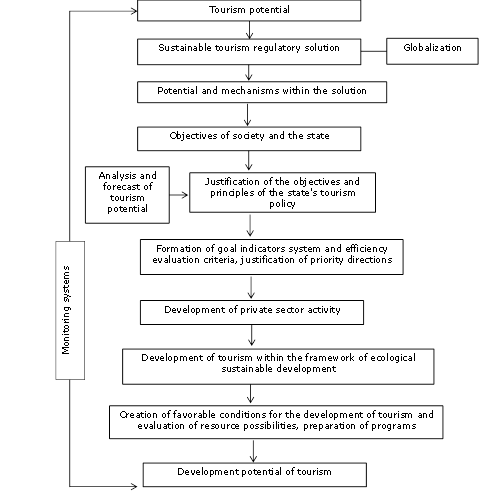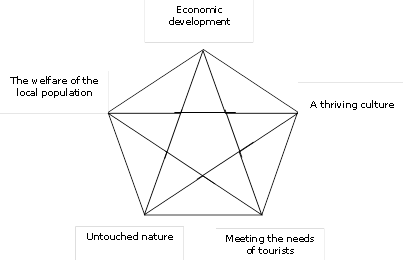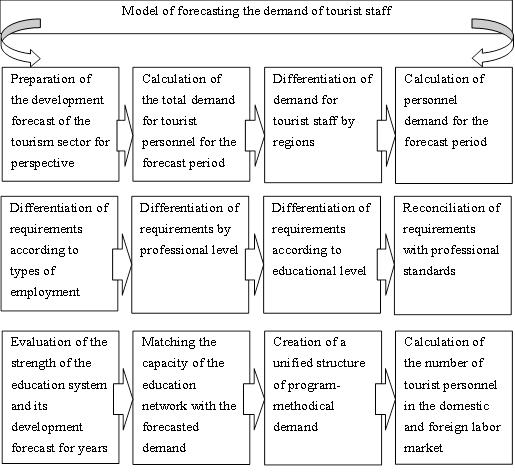Introduction
Tourism is understood as the act and process of spending time away from home in pursuit of recreation, relaxation, and pleasure while making use of the commercial provision of services. As such, tourism is a product of modern social arrangements, beginning in western Europe in the 17th century, although it has antecedents in Classical antiquity. Tourism is distinguished from exploration in that tourists follow a “beaten path,” benefit from established systems of provision, and as befits pleasure-seekers, are generally insulated from difficulty, danger, and embarrassment. Tourism, however, overlaps with other activities, interests, and processes, including, for example, pilgrimage. This gives rise to shared categories, such as “business tourism,” “sports tourism,” and “medical tourism” (international travel undertaken for the purpose of receiving medical care) (Walton, 2023).
According to Christou (2022), tourism is indeed a complicated phenomenon. It is an industry but also a social phenomenon; it affects the environment and is affected by it. It is credited with as well as accused of impacting both positively and negatively the natural, economic, and sociocultural environments of regions and destinations. It provides both intangible and tangible goods yet purchases within its domain often do not secure tangibles since experiences and memories thereof are heavily relied upon. It delivers joyful but also sorrow experiences while stimulating both cognitive and emotional psychological dimensions of humans. It rests on personal interactions yet employs robots to perform service delivery. Tourism’s workplace environment may ensure the restful and pleasant vocation of an individual, but the hard input of another person. It excites people to work within its enterprises but simultaneously, it is criticized for causing burnout, physical and emotional exhaustion to service providers or for taking advantage of new immigrants. Because of the above, tourism encompasses several disciplines such as geography, economy, psychology, sociology and technology.
As pointed out by the World Travel and Tourism Council (WTTC) in 2019 tourism industry contributed 10.3% to total global gross domestic product (GDP) and after decline in 50.4 % in 2020 due to COVID-19 pandemic restrictions (with about 62 million jobs lost) it seems to be recovering again since 2021 (WTTC, 2023). Then, given the importance of the tourism industry to the global economy, tourism policy makers, development experts, and industry practitioners have paid increasing attention over the past few decades to the management of the tourism sector’s contributions throughout the world, and particularly in developing countries (Liu et al., 2022).
In a broader scope, tourism is a means that influences the formation of the state budgets, the infrastructure of villages and cities, the preservation of historical and architectural monuments, and the development of small and medium entrepreneurship (Tahir & Rafiq, 2021). The high level of competition in the field of tourism and the ongoing economic reforms determine the importance of developing economic-mathematical models, as well as optimization issues considering the characteristics of the tourism market elements.
The purpose of tourism development modeling is to optimize tourism-recreation activities, improvement of management, and create an environmentally safe mechanism for the functioning of tourism-recreation regions (Kiseleva & Tramova, 2013). The method of creating an economic model is a systematic method. Its main feature is the compatibility of the developed regional models with both regional multi-sectoral industrial models and economic models within the tourism complex. A review of academic literature shows that this field is quite active nowadays (Li et al., 2021; Liu et al., 2022; Zhang et al., 2021) being the main goal of developing models to understand tourism patterns in order to achieve socio-economic development and attract a large number of tourists to the territory. For this reason and taking into account the importance of modeling in the field of tourism, the objective of this work is to study the most relevant models developed by academics in this field to show their specific characteristics and applicability.
Development
The main directions of the state policy in the field of tourism are related to the normative-legal activity, interregional coordination and improvement of tourism infrastructure, formation of a modern marketing strategy for the development of tourism products in the domestic and foreign markets, improving the quality of service and training personnel in the tourism sphere and international cooperation. In general, the development of a concept of a sustainable tourism model covering economic development has the following objectives:
Increasing tourism incomes, improving the tax system.
Improving the living conditions of the population.
Investment flow and creation of new jobs.
Providing Comfortable accommodation for tourists.
Growth of national dignity as a result of attitude to cultural-historical heritage and hospitality (Gulyayev, 2003; Kabushkin, 2005).
The selection of the optimal strategy for tourism development gives positive results in the current economic conditions. The state of the financial and credit system, the level of development of economic sectors related to tourism, service sectors in general, and tax and currency legislation have a great influence on the development of tourism. Regulation of tourism development by the state forms the foundation for tourism management.
Improvement of the regulation of tourism development consists of the transition to the principles of strategic regulation. The model of state policy formation for tourism development based on strategic regulation is effectively used to regulate tourism development at the state and regional levels (Figure 1).
Modern conditions require a limited view of the principles of the state, regional, and local politics. The main goal is to ensure sustainable economic growth and restore the country's economic and political power in the world economy. The basis of the state policy in the field of tourism is the formation of the tourism market with regional and local tourism products. Tourism development policy covers various areas of economic relations: financial credit, tax-budget system, organization-management, production-economic, social and ethnic processes, and a set of laws, measures to regulate economic processes in the interregional interaction system in the country in general.
Tourism policy is the sum of forms, methods, and directions of the state's influence on tourism-recreational complexes in order to achieve the goals of competition and the development of the economic complexes. The goal of the development policy of the tourism-recreational complex is to eliminate the socio-economic inconsistency between the production areas and the development of tourism. The analysis of production processes and tourist flows is important for the development of long-term financial, credit, and tax policies in relation to the tourism-recreational complex on a regional and local scale. This information makes it possible to determine the directions of investment flows to the tourism-recreational complex by regions, as well as to prepare current programs and investment policies, and to soften the tax policy.
Regional studies allow looking at the innovation processes in the field of tourism within the framework of State programs and VIP projects (Figure 2).
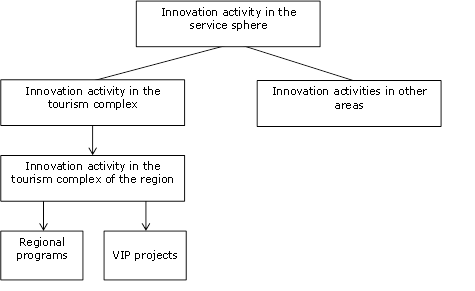 Source. (Kiseleva & Tramova, 2014)
Source. (Kiseleva & Tramova, 2014)Fig. 2 - Research of innovation processes in tourism-recreational complex.
Tourism management requires first of all following the principle of systematic analysis. The purpose of the research on tourism-recreational complexes based on systematic analysis. For this, an economic assessment of tourism-recreational resources should be conducted, tourism-recreational complexes in economic-geographical regions should be developed and placed, and a network of tourism facilities interacting with other areas of the economy should be created.
The difficulty of tourism management is related to both the multifaceted nature of services provided to tourists and various reasons. VIP-projects are the main means of implementing state innovation strategies. In this sense, state programs and VIP projects of various levels are part of the state policy of Azerbaijan aimed at regulating innovation processes.
During the formation of the development strategy of production areas, the main stage is the preparation and application of economic and mathematical methods and tools designed to increase the effectiveness of the functioning of the relevant economic spheres. It is important to create economic-mathematical models aimed at improving the management of the tourism economy (Kiseleva & Tramova, 2014).
Tourism models can be divided into 3 groups, according to their structure: econometric models, optimization models, and artificial intelligence models. Econometric models include demand and supply, as well as reserve models of tourism services. This model is important for forecasting and regulating tourism activity in order to study the impact of various factors, including instantaneous factors, on its intensity. These types of models are widely used and quite developed Tourism models can be divided into 3 groups, according to their structure: econometric models, optimization models, and artificial intelligence models. Econometric models include demand and supply, as well as reserve models of tourism services. This model is important for forecasting and regulating tourism activity in order to study the impact of various factors, including instantaneous factors, on its intensity. These types of models are widely used and quite developed (Lemeshev & Shcherbina, 1986; Song & Witt, 2000).
The demand and supply model for tourism services is designed to forecast the volume of demand and supply, and its distribution among existing and planned tourism complexes and bases. Also, in order to study the influence of various natural, economic, demographic, and other conditions on the intensity of tourist flows, the elasticity of demand and supply according to the tariff level of tourist services is studied. Such models include - the usual function of supply and demand from price; multifactorial regression models; the gravitational models of supply and demand that determine tourist flows and their centers of gravity.
The presented model of tourist services is built for the integral assessment of the tourism-recreational potential of the area. Tourism resources of existing and prospective tourist routes are characterized by some indicators of attractiveness, which depend on the attractiveness coefficient for the recreation process and the maximum intensity of tourist flows. Using attractiveness indicators with 1 tourist account, it is possible to determine the distribution of tourists according to the recreation potential of the area.
The optimization models include the optimization models of the functionalization and development of tourist facilities, as well as their restoration projects and the creation of new facilities. The main issue here is the improvement of the organization-technological structure of tourist facilities. There are also models for optimizing the investment attractiveness of the tourism area, the load per area, and tours (Khrustalev & Botasheva, 2012; Lemeshev & Shcherbina, 1986). Thus, there are optimal management models with economic criteria and factor constraints used in information-computer technologies.
During the research, there were examined the models developed by different authors. These are the model of forecasting the needs of tourist personnel, the development model of sustainable tourism, and the model of the forecast development of tourism and recreation complexes. The main goal of sustainable development of tourism is balanced development. Thus, in the model, no corner of the pentagon has a dominant feature, but each corner is at the same level, and they are of mutual importance (Figure 3).
The model is used to solve the problem of forecasting the demand in tourist staff. In general, the forecast model of the demand for labor resources in the field of tourism should be based on reliable and operational statistical information, taking into account the specifics of tourism activity, the effective use of tourist staff, and an accurate forecast of the field's development in the future (Figure 4).
The implementation of the economic development strategy of tourism-recreational complexes is possible with the help of forecasting based on the development of a model covering 6 interconnected blocks. The sum of these blocks is completed by 2 general distribution models for the entire complex - the total volume of production-oriented investment and the total number of employees in tourism-recreational complexes (Figure 5).
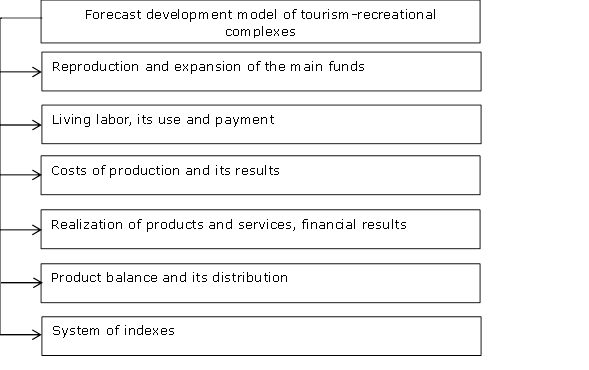 Source. (Bogdanov et al., 2019).
Source. (Bogdanov et al., 2019).Fig. 5 - Forecast development model of tourism-recreational complexes.
In general, all models can be divided into 2 parts: static and dynamic, which in turn are divided into parametric and non-parametric types. Static and dynamic models of regulation and management of tourism activities are implemented in the conditions of economic regulation. In all cases, parametric models provide more complete material for analysis and decision-making. In such models, the characteristic of the number of factors that are difficult to predict for the future, but play a decisive role in determining development directions, acts as a parameter.
Since the tourism sector is closely connected with other sectors of the economy, it is necessary to take into account interdisciplinary relations in the models. In dynamic models, a fundamentally important issue is showing the economic mechanism of development. Such models include functionalization and development models of individual tourism facilities. With their help, the optimal mode of operation of the existing tour bases intended to serve tourists is determined. There are also models for the restoration and creation of new tourist facilities that attract investments, as well as optimization of their organizational and technological structures. Taking into account the maintenance of the ecological balance, there is also developed a model for optimizing the load on individual objects. The environment, which depends on the intensity of tourist flows, acts as an optimality criterion and limiting condition. Also, the functionalization and development model of regional tourism systems, as well as the static and dynamic development model, which allows finding the optimal organization-technological and spatial structure, are characterized as optimization models. The following are the models available in the tourism sphere:
Transport model reflecting tourist flows on the country's tourist route network.
Selection of tourism complex project according to the conditions of the area.
Optimizing the intensity of auto-tourist flows on the existing road network, taking into account the capacity of tourism facilities.
Formation of optimal tourist routes (tours) by tour operators.
Tourist Service Management.
Automation system for managing the activities of individual tourist facilities.
Optimization model for designing an integrated recreational system with an increased operating mode.
In the field of tourism, artificial intelligence models include demand and supply forecasting for tourist flows and hotel sector management models. Neural networks, expert systems, imprecise logic, and genetic algorithms are the main directions of artificial intelligence development in this field (Kiseleva & Tramova, 2014). This increase has happened because the use of artificial intelligence with the help of very few resources allows for getting accurate results (Ossovsky, 2002). However, in spite of the great advance of AI to comprehend all the different models will continue being of great importance since the composition of the economic model of tourism complexes also includes obtaining the effect from the placement of tourist facilities in specific regions, as well as finding the optimal value according to state and regional interests (Kiseleva & Tramova, 2012).
Conclusions
Mathematical models play an important role in the analysis of tourism, since they allow complex aspects related to tourism demand and supply to be represented in a simplified and quantified way, allowing predictions, and simulating future scenarios, which is useful for decision-making in tourism. planning and management. Similarly, they are used to analyze the relationship between tourism and economic variables, to assess the economic impact of tourism in a region, and to identify patterns and trends in tourism behavior.
In the field of tourism analysis, some of the most widely used mathematical models include: 1) tourism demand models used to predict tourism demand based on economic, demographic and psychographic factors, 2) tourism demand and supply models to analyze the interaction between tourism supply and demand and to identify possible asymmetries in the market, 3) destination choice models used to predict tourists' choice of tourism destinations, 4) economic impact models to assess the impact economic development of tourism in a region and to identify the interactions between tourism and the local economy and 5) simulation models that allow simulating future scenarios and to evaluate the effectiveness of tourism policies and strategies.
It is important, however, to point out that there is great uncertainty in these models due to the dynamic and complex phenomenon that is tourism, and since the tourism sector is closely connected with other sectors of the economy, consideration of interdisciplinary approaches is important when predictions are analyzed.













